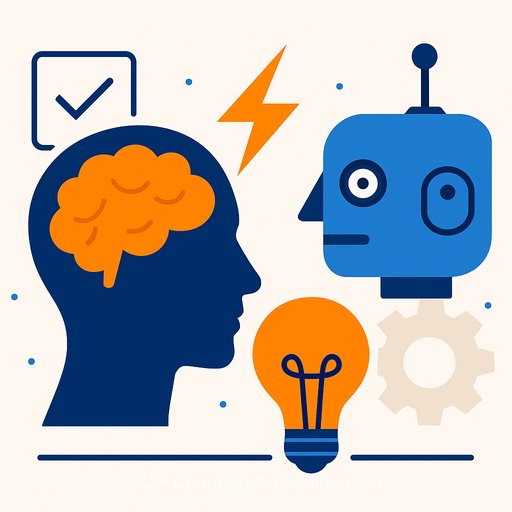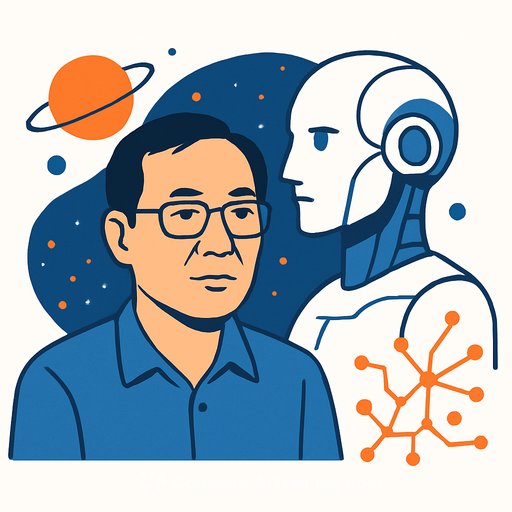AI may blunt your thinking - here's how writers can stay sharp
Socrates worried that writing would weaken memory. He was wrong about that, but his bigger fear holds up: cognitive tools can dull our minds when we lean on them the wrong way. Generative AI is no exception. Studies suggest we disengage critical thinking when a system feels "smart," and over-reliance during learning makes new information stick less.
The fix isn't to avoid AI. It's to change how we use it. Treat AI as a coach and critic, not a crutch. That mindset keeps your edge while speeding up the boring parts.
Why writers are especially at risk
- Autocomplete addiction: Letting the model guess the next sentence trains you to accept "sounds right" over "is right."
- Surface-level research: Summaries feel complete, so you stop digging. Shallow inputs lead to shallow arguments.
- Automation bias: If AI sounds confident, you trust it. Confidence ≠ correctness.
- Idea laundering: You paste prompts, get "insights," and call it a draft. Your voice fades, your thinking goes soft.
Principles that keep your cognition intact
- Write before you query: Draft a 3-5 sentence thesis and a quick outline from memory. Then ask AI to challenge it.
- Separate modes: Human for argument. AI for options, structure checks, and line edits. Don't mix them in the same pass.
- Friction by design: Time-box "no-AI" windows for ideation. Use AI later to test and tighten.
- Source or strike: Every non-obvious claim gets a source or it's gone. Ask AI to propose citations, then verify them yourself.
- Make the model question you: Ask for assumptions you missed, counterexamples, and failure modes. Debate beats dictate.
- Externalize memory the right way: Write notes by hand or in a low-friction app, then compress them into a brief summary in your own words. Retrieval beats hoarding.
A simple workflow for strong thinking with AI
- Idea pass (no AI): Define the promise of the piece in one sentence. List three audience pains and three outcomes.
- Skeleton: Draft a quick outline and a paragraph per section. Leave gaps. Don't polish.
- AI critique (no rewriting): Ask for logical holes, weak claims, missing counterarguments, and unclear transitions. Keep it diagnostic, not generative.
- Revision by you: Strengthen arguments, add evidence, cut fluff. Your voice, your choices.
- AI line edit: Request specific edits (clarity, concision, cadence). Require "change + reason" so you can accept or reject with intent.
- Fact check: Verify stats, quotes, names, and timelines. If AI can't show a credible source, you find one-or delete.
Prompts that make you think (not coast)
- Critique-only: "Here's my outline and thesis. Identify assumptions, missing evidence, and likely objections from a skeptical expert. No rewrites."
- Counterarguments: "List the three strongest critiques of my core claim. For each, suggest what evidence would change my mind."
- Evidence audit: "Highlight any sentence that implies a fact. Propose a credible source type I should seek for each (study, dataset, primary doc)."
- Reader clarity: "Flag jargon, hedging, and passive voice that bloats meaning. Suggest plain-language alternatives."
Guardrails that prevent over-reliance
- First-pass rule: You produce the first outline and thesis, always.
- Word cap: Limit AI to bullets and margin notes until your second draft exists.
- Source standard: No unlinked stats. No quotes without origin. No "as studies show" without a study you can read.
- Version labels: Tag drafts "Human-1," "AI-notes," "Human-2," etc. If "AI-draft" appears before "Human-1," start over.
What the research hints at
We've seen "cognitive offloading" for years: people remember fewer facts when they expect easy access to them, and cognitive capacity dips when tempting tools sit nearby. That doesn't make tools bad-it means we need better habits.
A weekly "writer's workout" to build independent thinking
- Mon: 45 minutes of cold writing on a topic you know. No AI. Then ask AI to poke holes.
- Wed: Read two primary sources. Summarize each in five sentences from memory before checking yourself.
- Fri: Take one claim from your draft. Build the steelman against it. Adjust your piece accordingly.
For writers who want structured practice
If you want guided drills, templates, and critique workflows that keep you in control, explore these resources:
Bottom line
AI doesn't make writers dull. Passive use does. Write first, question hard, source everything, and keep the model in a tight role. Your thinking gets sharper-and your work reads like it.
Your membership also unlocks:






